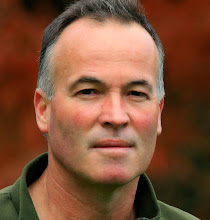 |
| Carrots being prepared for aerial poisoning drop. Kahurangi National Park. |
Many believed this was just another smoke screen orchestrated by the 1080 industry to try to allay growing concern and outrage in opposition to their poison operations. It appears these people were right.
When dropped from the air, the poison lands in the canopies of trees, all across the forest floor, and directly into mountain streams.
Dust from the drops has been reported (www.1080science.co.nz) to spread at least 1km from the drop zone. 1080 is deadly to all air breathing organisms - 1080 is also a broad spectrum insecticide.
The users of 1080 avoid the animal welfare issue associated with its use, at all costs.
Scientists state that about 50% of deer populations are poisoned in aerial operations.
 We have filmed many dead deer after 1080 operations. In most cases it is clear they die in horrific circumstances. The extent of this wildlife atrocity is enormous.
We have filmed many dead deer after 1080 operations. In most cases it is clear they die in horrific circumstances. The extent of this wildlife atrocity is enormous.Scientists estimate the annual kill of deer through aerial poison drops is over 20,000. When carrots baits are used, the figure is higher.
In late 2010 we were filming a posion drop that covered 90,000 hectares across the pristine Westland National Park area.



We conducted a necropsy on a dead hind we found, clearly killed by the poisoning operation. The necropsy was filmed, edited and delivered to the PCE in the belief that it may be taken into account, and that the welfare of animals would be an important consideration, to go with the other, overwhelming evidence against 1080.
Once again, we were wrong. The power of bureaucracy is profound, and profoundly ruthless.
It should be noted that it is illegal to poison deer, pigs, goats, horses, cows, sheep, birds, dogs, cats, aquatic life, insects, bats, people, etc. etc... Yet, all these species have been killed, some in high numbers, in aerial poison operations.
Animals that are killed, and there's lots of them, are left to decompose where they die - be that a rat in a stream, or a deer on a river bed.

Animals that die, contain the poison in their carcass. This picture of an endemic Weka feeding on a possum carcass, possibly poisoned, demonstrates how the poison travels up the food chain.
All this was ignored by the PCE report.
Decomposition of carcasses can take months, to years, in dry conditions. This deer was photographed 4 months after the photo of the same deer, above. The poison that killed it is retained in its carcass, poisoning anything that consumes it - sublethally, or lethally.
And if all these images don't spell out the story, plain and simple, there's also the issue of misleading our tourists. Come to New Zealand, we're clean and green, our advertisements claim!
The following photo is of a poison sign stapled to a camp-ground sign, in a popular north island tourist spot.
Are we a joke New Zealand? I think so!
To get the full story, click the link below to watch Poisoning Paradise ...












Also, on the subject of animal welfare, Nine To Noon had a really interesting discussion with National Animal Welfare Advisory Committee chair, John Hellstrom ONZM, the other day.
ReplyDeleteHellstrom thinks we should focus more on pest control and less on biosecurity if we want to save our unique ecosytems. He supports the increased use of 1080 and says bird life explodes in areas where it is used. He thinks people opposed to 1080 poison are pushing other agendas and that anyone who is seriously concerned about protecting native wildlife should support its ongoing and increased use.
http://www.radionz.co.nz/national/programmes/ninetonoon/audio/2491461/feature-guest-john-hellstrom.asx
(Approx 25 minutes into the interview).
We would like to know any place in New Zealand, where aerial 1080 has been applied, where bird life is exploding! We have travelled this country from one end to the other, filming poison drop zones, and filming areas that have never had 1080 applied. We are yet to see an area that has aerial 1080 applied, exploding in bird life. In fact, it's the opposite. So, please Mr Hellstrom, tell us where these areas of bird population explosions are, because we'd love to visit them.
ReplyDelete